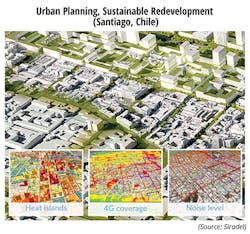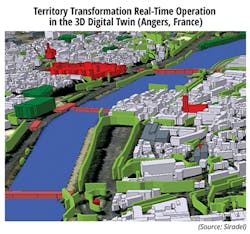With digital twins having made their appearance in cities over the last few years, mainly in the form of pilots showcasing limited capabilities, their more widespread deployment as multi-purpose urban decision and management tools is now imminent, not in the least driven by COVID-19 requirements in terms of achieving increased resilience levels and optimized asset and demand-response resource management. Digital twin deployments will exceed 500 by 2025, according to ABI Research.
Real-time 3D models of a city’s built environment allow scenario analysis through the simulation of the potential impact of natural disasters like flooding, adopt generative design principles for new city developments optimizing energy savings and solar capacity, and saving costs by operating cities more efficiently and effectively.
InvisiLight® Solution for Deploying Fiber
April 2, 2022Go to Market Faster. Speed up Network Deployment
April 2, 2022Episode 10: Fiber Optic Closure Specs Explained…
April 1, 2022Food for Thought from Our 2022 ICT Visionaries
April 1, 2022Range of Application Areas
Since the first urban digital twins’ deployments by vendors like Dassault Systèmes in cities such as Singapore only 3 years ago, feature sets are now rapidly expanding to enable a much wider range of application areas:
• Infrastructure Coverage Planning — Light poles, 5G, Wi-Fi, Video Surveillance
• Indoor Airflow Simulation — Optimized interior designs to minimize the spread of the Covid-19 virus
• Resilience and Emergency Response — Real-time view on city assets and resources
• Open Platforms and Marketplaces — Driving third party GovTech ecosystem integration
• Transversal Governance and Citizen Participation — Support for Cross-vertical policies and citizen engagement
• Green Infrastructure Management — Monitoring and maintenance of green spaces
• Vehicle Electrification and Smart Mobility Deployments — Simulation of impact on air and noise pollution to inform policies
• Sustainability and Circularity — Digital twins enable renewable energy maximization and recycling optimization
The digital twin ecosystem system activity is growing quickly with more suppliers announcing more deployments in more cities. Vendors like Dassault Systèmes and Engie subsidiary Siradel are paving the way for extending urban digital twins to marketplaces, and opening access to key metrics and dashboards to the citizens themselves, increasing their overall involvement and helping gain approval of city government decisions and policies.
Additional research highlights include:
• Digital twins consist of 3 components: Spatial 3D Modeling of Physical Structures and Assets; Modeling of Mechanical, Electrical and Electronics Systems; IoT sensor data for real-time visibility and simulation
• 3D mapping of buildings and other structures is increasingly performed by Lidar-equipped robots and drones combined with AI-based processing
• Digital twins typically consist of multiple domain-specific digital twins (buildings, energy, traffic, etc.) aggregated into a city-wide digital twin.
Cityzenith recently donated its SmartWorldPro2 digital twin platform to selected cities to help them become carbon neutral as part of the global Clean Cities — Clean Future campaign.
Bentley Systems partnered with Microsoft to integrate Azure IoT Digital Twins and Azure Maps into its iTwins platform.
The City of Helsinki won the Bentley Systems award for its Digital City Synergy project aimed at helping the city improve collaboration and get more value from its city models.
For more information, please email [email protected], visit https://www.abiresearch.com/, follow ABI Research on Twitter @ABIresearch, and follow Bonte on Twitter @ABI_Bonte.
Resources and Notes
These findings are from ABI Research’s Smart Cities and Smart Spaces quarterly update report. This report is part of the company’s Smart Cities and Smart Spaces research service, which includes research, data, and analyst insights. For more information, please email [email protected], visit https://www.abiresearch.com/, and follow ABI Research on Twitter @ABIresearch.
Like this Article?
Subscribe to ISE magazine and start receiving your FREE monthly copy today!
About the Author







